The greatest world wonders you’ve never heard of, according to 16 of our writers
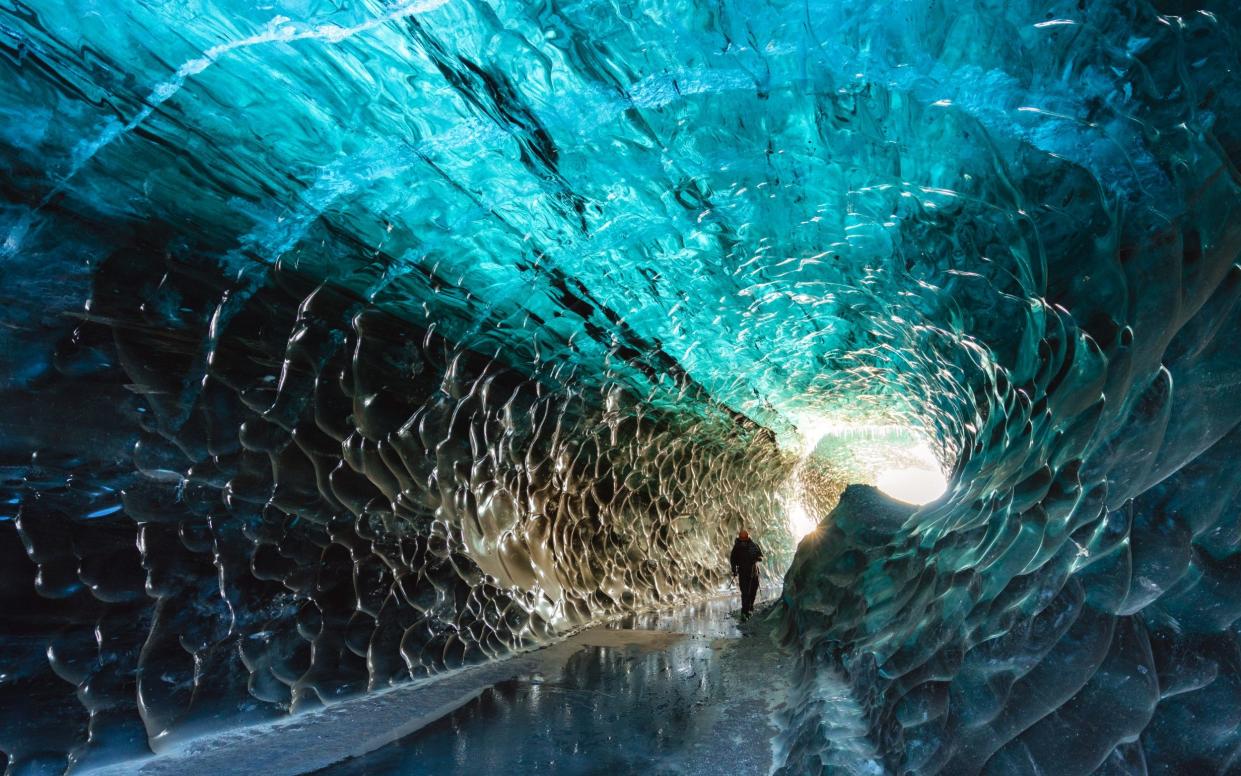
There are several overused phrases in the broad lexicon of travel writing, but few quite as regular in their deployment as “hidden gem”. It is an unimaginative use of language, bordering on cliché, put to work on a near-ceaseless basis to describe everything from a somewhat less busy beach (a little up the coast from a popular resort) to a neighbourhood restaurant in a corner of a big city (ever so slightly removed from the beaten tourist path).
And yet… there are occasions when places are both genuinely lacking in wider profile, and utterly deserving of your time and attention, should you find yourself in their vicinity.
Below, our experts pick their 16 out-of-the-way dots on the map that, for various reasons, are little known to the (British) travelling public, even though they make cameras click, jaws drop, and superlatives fall from mouths when you lay eyes on them.
Of course, “little known” and “completely unknown” are different things, and if you have most definitely heard of the Tara River Canyon or Iceland’s Vatnajokull, tell us your recollections in the comments box below. Equally, if you have found a special hotspot which pings upon few radars, then tell us about that too. Just don’t call it a “hidden gem”.
1. Tara River Canyon, Montenegro
‘My scepticism was replaced by a mild vertigo’
By Chris Leadbeater
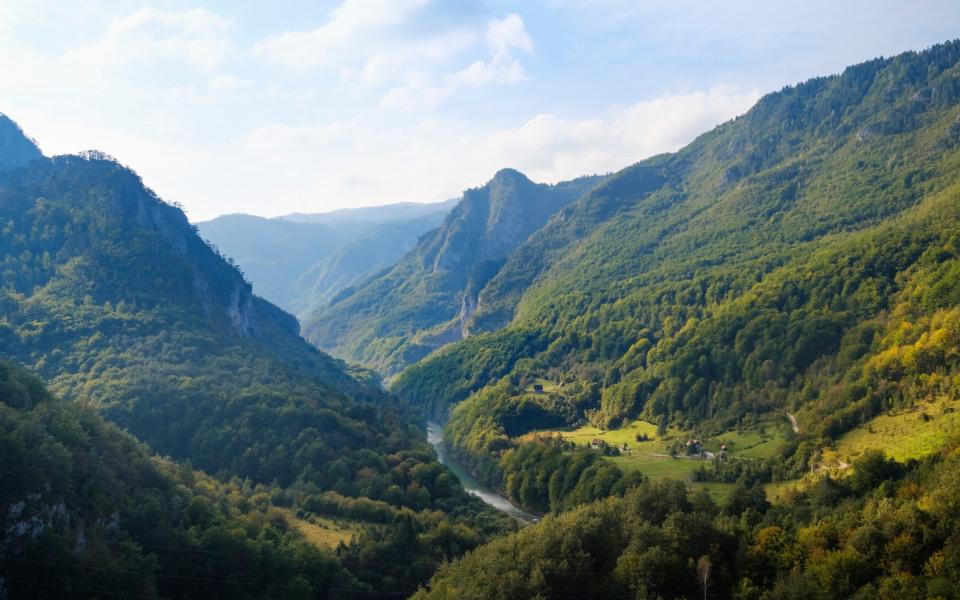
My primary feeling, on the drive to the Tara River Canyon, was one of scepticism. True, the road from Budva, on the Adriatic coast, was arcing up at a suitably impressive angle, and I was in no doubt that the Ljubišnja mountains – which are shared by Montenegro and Bosnia and Herzegovina – add up to a range of genuine heft and height. Still, I was not convinced that the vast scar in the soil we were aiming for amounted to – as my guide had said (and as is often claimed in local literature) – the planet’s second deepest canyon.
I’m still not. You can quibble on the maths, but this admittedly sizeable gap in the rocks – where one of the Balkans’ key rivers cuts through Durmitor National Park and the wider Dinaric Alps – is easily eclipsed for depth by similar geological features in Tibet, Nepal and Peru. And that’s before you discuss America’s grand statue on the canyon pantheon.
But then, at up to 4,300ft (1,310m) from ridgeline to currents, the Tara River Canyon plays its part brilliantly. On approaching the precipice, my scepticism was replaced by a mild vertigo – the sensation underpinned by a golden eagle (many of them nest in the cliff face) whirling on the thermals beneath me; the river a ribbon of turquoise far below.
At the time, Montenegro was the planet’s newest country, a fledgling entity just a year into the independence it had declared in 2006 – and I remember thinking it remarkable that such a dramatic slice of geography was largely unknown to western European eyes. The best part of two decades later, I am not sure that this state of affairs is any different.
Regent Holidays (0117 453 8501; regent-holidays.co.uk) sells an eight-day ‘Montenegro Family Holiday’ that visits the canyon for zip-wiring. From £1,605 a head, with flights.
2. Santo Antão, Cape Verde
‘It’s like a half-finished project, abandoned to the ocean’s fury’
By Sarah Baxter
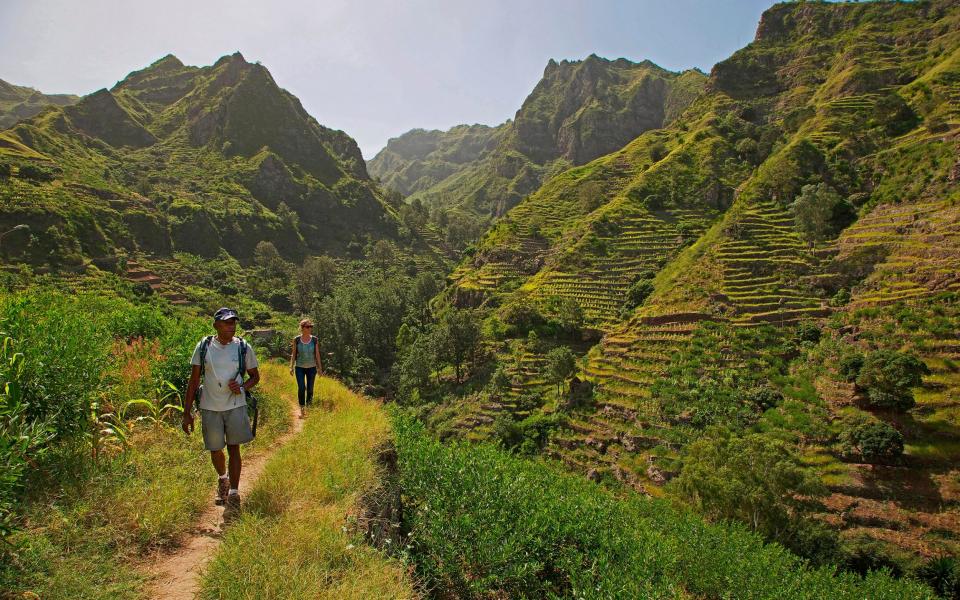
Adrift in the mid-Atlantic, the entire Cape Verde archipelago isn’t widely known; those that can place it on a map probably think of beachy Boa Vista and Sal. But the northernmost island of Santo Antão? Completely off-radar. And an entirely different proposition.
Santo Antão is primordial. No part flat or uncracked. It’s like a half-finished project, rough-edged and raw, that’s been abandoned to the ocean’s fury. They call it the “hiking island” because that’s what it’s excellent for. Trails used by locals for centuries now allow walkers to explore. One day I traced the north coast, along stark, plunging cliffs; on another, I hair-pinned up a rock wall to a surreal high plateau; on another, I climbed into the lush Paul valley, where I drank potent local grogue, breathing air sweetened by the sugarcane from which it was made.
Santo Antão has drama, variety, good trails, good drink. A hiker’s isle, indeed – but with few other hikers there.
Walks Worldwide (01962 302085; walksworldwide.com) offers an eight-day Hiking Trails of Cape Verde self-guided trip that focuses on Santo Antão. From £1,869pp including B&B accommodation, most meals and flights.
3. Maginot Line, France
‘One is fascinated to go in and relieved to get out again’
By Anthony Peregrine
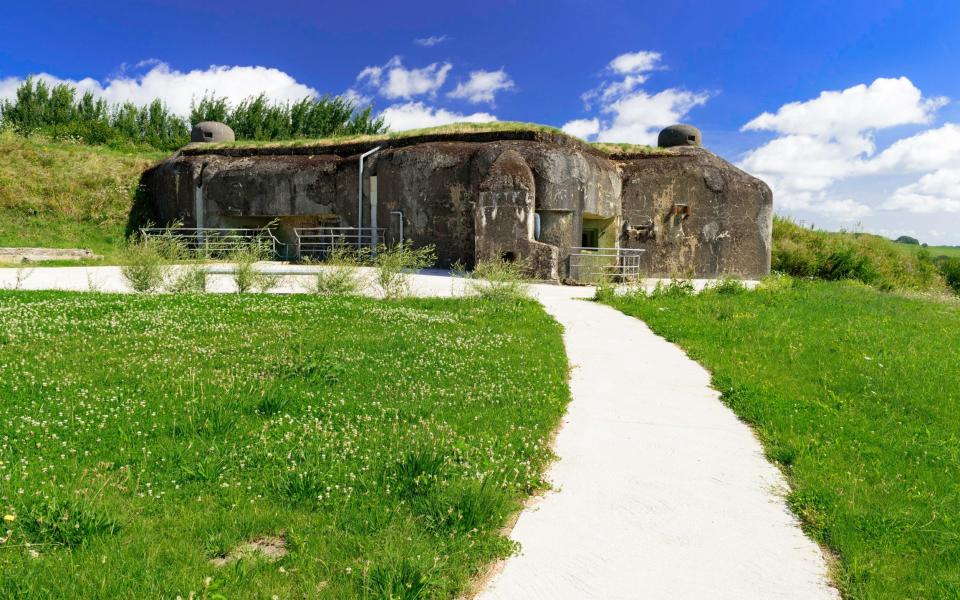
It’s scarcely unknown that the line was the 1930s French defence project born of the (correct) conviction that the Germans would be invading again sometime soon. More surprising, perhaps, is that the vast underground forts still exist – destroying them would mean blowing up half of north-eastern France – and that many may be visited.
Cynics say that the line didn’t hold up the stormtroopers above 15 minutes – and, certainly, it wasn’t as effective as hoped. But that was because the network of forts – 142 in the Moselle département alone – didn’t go far enough: the Belgian frontier and Ardennes were unprotected. As far as it went, the line was extraordinary, the greatest engineering feat of the interwar years. They remain stunning sites and the greatest of them all is the Hackenberg, at Veckring, north-east of Metz.
Six miles of underground tunnels serve living quarters, kitchens and 19 artillery blocks, still equipped with cannons. The whole site spans 198 acres, housed 1,200 men and required 4,800 potatoes a day. Fortunately there was (and still is) an on-site potato peeling machine. Also still operating is the cacophonous electric railway which whirled troops, and now whirls visitors, into the bowels of the fort. One is fascinated to go in and relieved to get out again into the sunshine of a Moselle landscape rolling gently to the Vosges mountains. There is war and peace round here. It’s a revelation.
The seigneurial luxury of the Domaine de la Klauss at Montenach is another revelation (domaineddelaklauss.com; doubles from £175).
4. Trongsa Dzong, Bhutan
‘It is the lovechild of Lhasa’s Potala Palace and Dracula’s castle’
By Paul Bloomfield
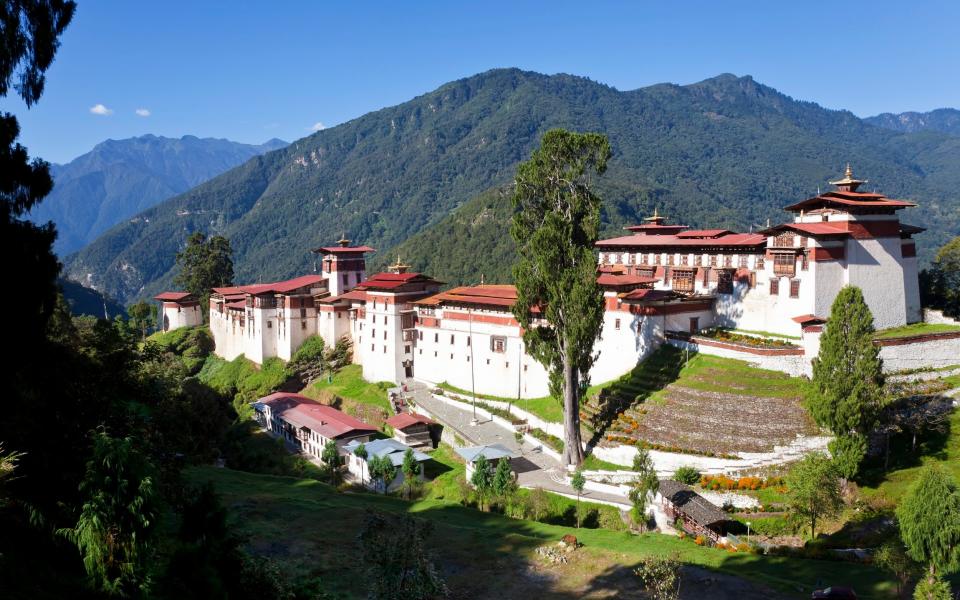
My first glimpse was enough to stop me in my tracks. Or at least it would’ve been, if I wasn’t hurtling down a steep, gravelly road on a mountain bike, gratefully descending from the breathlessly lofty, briskly windswept 3,420m Pele La pass. As it was, a few prudent tugs on the brakes brought me fishtailing to a halt.
Gazing across the canyon carved by the churning Mangde Chhu river, my eyes locked onto a gleaming, muscular complex of whitewashed walls, red roofs and gilded spires crouched on a vertiginous ridge – the lovechild of Lhasa’s Potala Palace and Dracula’s castle. Fortress? Monastery? Stately royal residence? Trongsa Dzong is all three.
Choekhor Rabtentse Dzong, to give its full name, was built in the mid-17th century on a strategically located outcrop in the dead centre of Bhutan. It may lag behind cliff-clinging Tiger’s Nest temple in Instagram likes, and be far less thronged than the squat bulk of Punakha Dzong or the phallic mystique of Chimi Lakhang, all regulars on greatest hits itineraries in the country’s west.
But the largest of the monastery-fortresses boasts an extraordinary mountain setting, lofty Ta Dzong guard tower and no fewer than 23 lhakhangs (Buddhist temples) vividly painted with eye-popping murals to out-wow anything else in this otherworldly Himalayan destination.
Venture across the elegant cantilevered bridge and through a gateway guarded by grimacing demons to delve into a bustling citadel seemingly little changed in centuries. Courtyards lined with prayer wheels and dizzying decorations bustle with red-robed monks and administrative officers – but scant tourists. The main east-west road snaking the length of Bhutan once ran through the Dzong; now most visitors, if they venture east of Punakha, fly between Paro and Bumthang. So this astonishing monument remains a historic marvel visited by relatively few – and all the more atmospheric and imposing for it.
Mountain Kingdoms (01453 844400; mountainkingdoms.com) has an 18-day Cultural Cycling Tour of Bhutan visiting Trongsa, departing 2 November 2024, from £5,845pp including flights; tailormade options available.
5. The chalk cliffs of Rügen, Germany
‘They are almost sacred – the Teutonic equivalent of the White Cliffs of Dover’
By William Cook
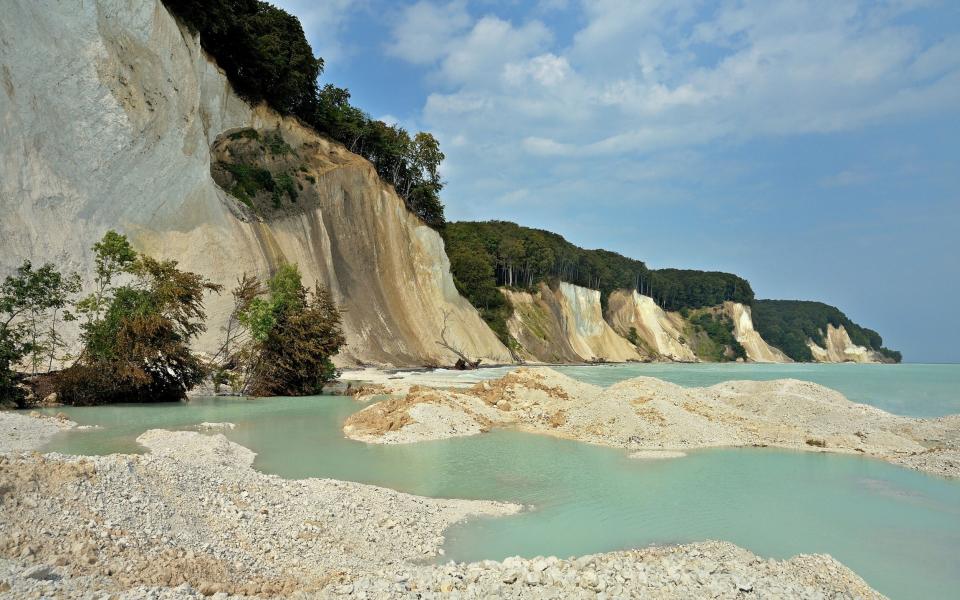
For Germans, the chalk cliffs of Rügen are an iconic, almost sacred site – the Teutonic equivalent of the White Cliffs of Dover. But while Britain’s bluebird-friendly national symbol overlook a bustling port and one of the world’s busiest waterways, the Kreidefelsen (as Germans call them) stand in a remote, secluded corner of the Bundesrepublik, a spot that few Britons have ever visited.
Looking out across the Baltic, these craggy chalk cliffs are spectacular, and the thick forest that surrounds them is intensely atmospheric. Rügen, Germany’s biggest island, is very popular with domestic tourists, but little known in Britain – and this giddy viewpoint (immortalised by Germany’s great romantic painter, Caspar David Friedrich) is one of its numerous attractions.
The eastern shore is sandy, the west coast is wild and marshy. The interior is a pretty patchwork of woods and meadows, crisscrossed by scenic cycle paths. Steam trains chug between the main resorts. Ostseebad Binz is the best base, a jolly seaside town with direct trains to Hamburg and Berlin.
Doubles at Kurhaus Binz (www.travelcharme.com) from £218 a night, including breakfast. For more information visit www.germany.travel.
6. Banteay Chhmar, Cambodia
‘Its remnants came into sight, like buoys bobbing in an ocean of greenery’
By Amanda Hyde
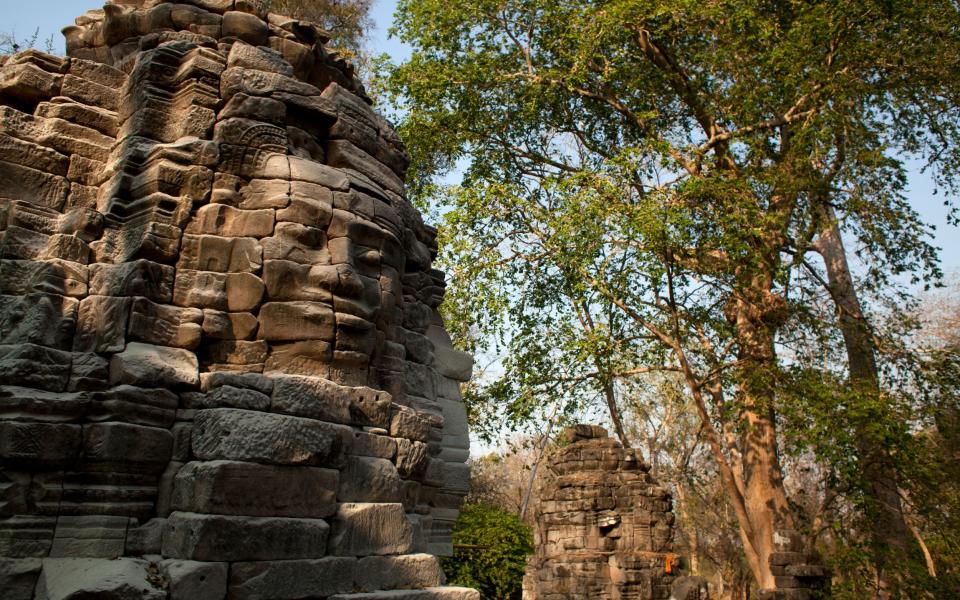
It was my fourth day in Cambodia back in 2011, and I was already experiencing the dreaded temple fatigue. Staying in Siem Reap, the satellite town to Angkor, meant daily visits to the (admittedly spectacular) ruins of the 12th-century temple complex – now with added throngs of tourists and souvenir sellers.
But I had already committed to a trip to another, lesser-visited temple complex, a day’s drive from Angkor which, like its more famous counterpart, had been commissioned by King Jayavarman VII. To make things easier, we took a helicopter to reach it, drifting across dense jungle until its remnants came into sight, like buoys bobbing in an ocean of greenery.
There were no queues at Banteay Chhmar (there were no tourists), just tumbledown pillars carved with stories from another time, archways half-consumed by rapacious plants and long-forgotten towers adorned with crumbling faces that surveyed the ruins with a look of tranquil resignation. Surrendered to the jungle centuries ago, Banteay Chhmar was like stepping into a myth or a movie – the ultimate cure for the temple weary.
Surprisingly little has changed in the interim, though a new road means the journey time from Siem Reap has been slashed to 2.5 hours, while the complex is now cleared of civil war landmines and on Cambodia’s Tentative List of World Heritage Sites. Perhaps it will soon be famous once more – and deservedly so.
Inside Asia’s 14-night Kingdom of Adventure trip includes a visit to Banteay Chhmar and costs from £3,347pp including activities and some meals, but excluding international flights.
7. Elqui Valley, Chile
‘A heroic scar in the mass of mountains’
By Chris Moss
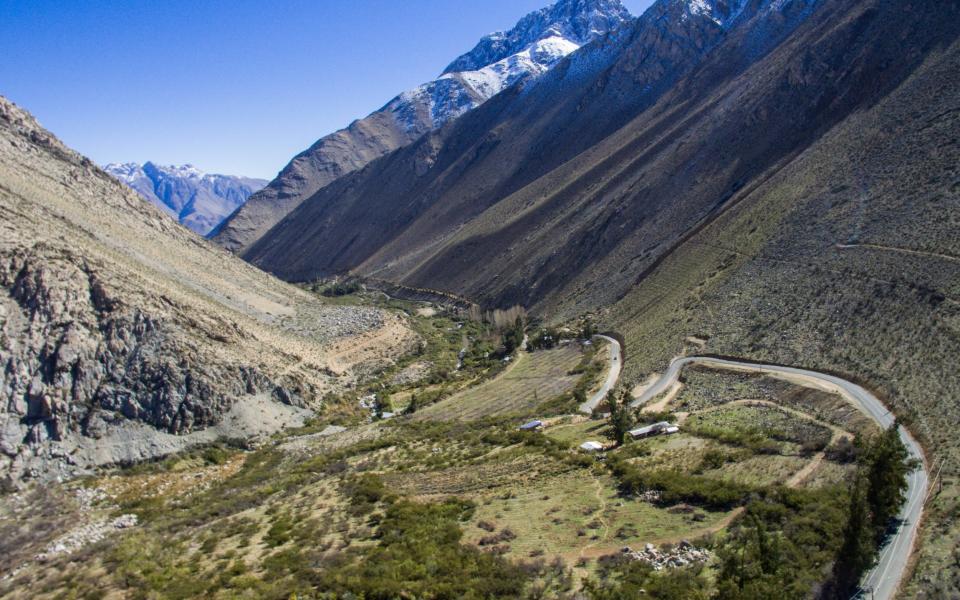
Between the beach town of La Serena and the Chilean Andes lies one of the most beautiful valleys in South America – the Valle del Elqui, rising gently from the fertile plains to the Agua Negra pass at 15,680 feet above sea level. I drove up the valley on the meandering, well-paved Ruta 41 following a long road trip through the Atacama. This is the southern limit of the desert region, and as you climb, the steep higher slopes turn tan-coloured, baked by perpetual sunshine, while the well-watered valley floors are carpeted in green.
Elqui is an important wine-growing region. Cultivation of muscat, muscatel, Pedro Ximénez and torontel grapes to make pisco began in Chile in the 19th century; it’s now the national drink. I stopped at a distillery to the south of the small town of Vicuña. I expected firewater and was pleasantly surprised by the floral and honeyed notes. An even more enjoyable tasting was at the Alfa Aldea Astronomy Centre, where glasses of shiraz and delicious snacks were handed out during a very chilled stargazing session.
Observatories are dotted all over Elqui, which has startlingly clear night skies. We saw Mars, Venus, Uranus, the nebula in Orion’s sword and several satellites, meteors and star clusters. A full moon was up. I can only imagine the celestial extravaganza on a moonless night. My top tip: keep an eye on the lunar cycle and book your flights accordingly.
Gabriela Mistral, Chile’s 1945 Nobel-winning poet – the first Latin American author to receive the prize – lived in the Elqui Valley and described it as “a heroic scar in the mass of mountains, but so brief, that it is nothing but a torrent through two green banks. And this little place can be loved as perfection.” It can indeed.
Trailfinders (020 7084 6518, trailfinders.com) has a four-day Elqui Valley extension including a driver and guide, meals, vineyard visits and stargazing from £1,576pp. Flights to La Serena not included.
8. Vatnajokull, Iceland
‘You are surrounded by thousands of years of frozen time’
By Sean Thomas
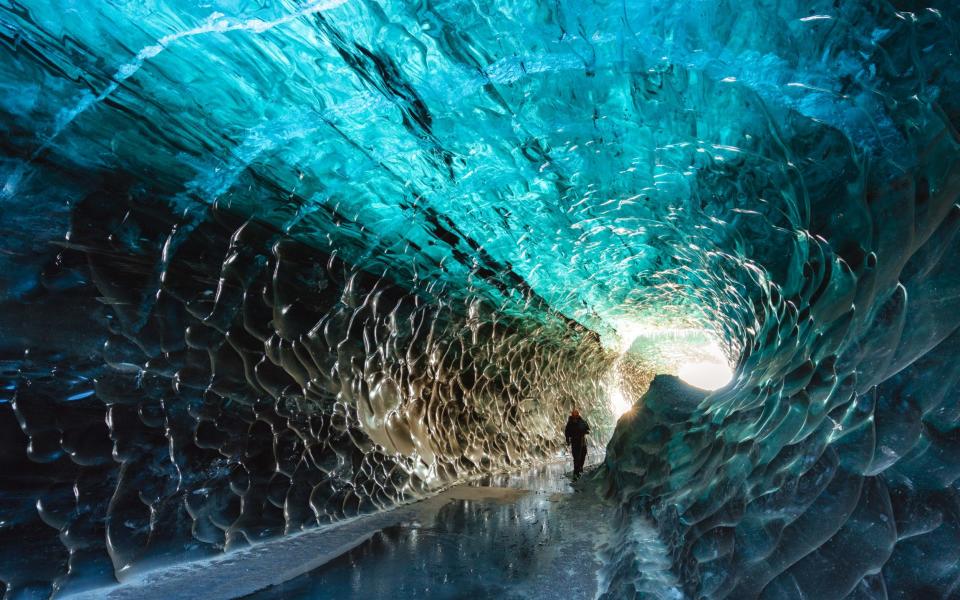
Iceland is not unknown to British tourists. Despite its remote location, the advent of cheap flights means that many of us have come to love the island’s highlights, like the Blue Lagoon, Gullfoss falls and the original Geysir.
It’s therefore surprising that an even more momentous spectacle is still hiding away. It’s called the “Ice Cave of Vatnajokull”, and it is exactly what you’d expect: a tremendous glassy cavern, deep in the core of an almighty glacier.
Getting there isn’t easy (perhaps that explains the obscurity). You need guides and wheels to assist you over endless Mordor-black sands, then you hike to a gaping entrance, resembling the frigid lair of an Arctic dragon. Slowly you edge inside (this place is dangerous, helmets are compulsory); finally you are surrounded by thousands of years of frozen, tingling and translucent blue time, like a vast and crystalline daydream. Magnificent.
Discover the World’s Journey to the Centre of the Earth (discover-the-world.com). Itinerary features Vatnajokull National Park and costs from £1,098pp, excluding flights.
9. Chavin de Huantar, Peru
‘Forget Machu Picchu – this mysterious site pre-dates the Incas’
By Natalie Paris
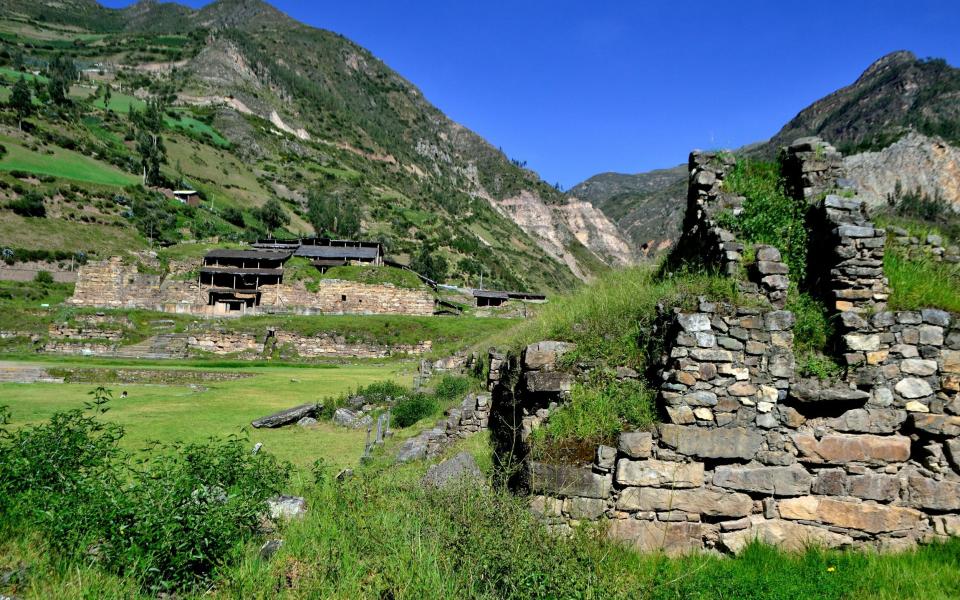
With sharp fangs and snakes for hair, the Lanzon is a four metre-high stone deity that has been glaring at anyone entering its sacred space since 500BC. It sits at the centre of an underground labyrinth in Chavin de Huantar, an ancient Andean site of worship that Unesco calls “a unique monument of universal significance”.
Coming face to face with the underground Lanzon is more exciting than most experiences of dusty ruins. As I turned from an empty chamber into a narrow, straight tunnel, anticipation built as each step took me closer to a thin, dimly-lit column at the far end. Looking up at the carved face gave me chills. The image was angled so that I couldn’t fully appreciate what sort of half-man, half-beast it was. Above ground, stone art depicted the heads of jaguars and the hallucinogenic San Pedro cactus. What pilgrims had stood here before me and why? A wonder indeed.
Humboldt Travel (01603 340680, humboldttravel.co.uk) offers a 19-night Lost Cities of Peru trip that includes a guided tour of Chavin de Huantar, from £8,680 per person, not including international flights.
10. Long Meg and her Daughters, Cumbria
‘Wordsworth called it Britain’s most notable relic alongside Stonehenge – he has a point’
By Greg Dickinson
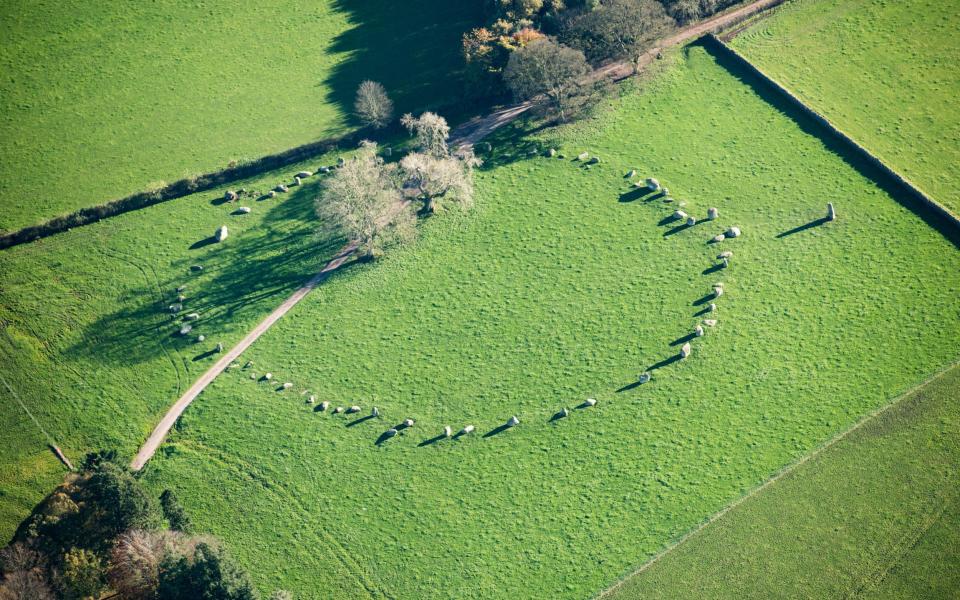
Long who and her whatnows? Given that there are more than 1,300 stone circles across Britain, you are forgiven for not knowing all of them off by heart. But Long Meg and her Daughters is the third biggest stone circle in England after Avebury and Stanton Drew. So you can imagine my surprise when I arrived to find no visitor centre and no other humans – just a herd of inquisitive cows lurking around dozens of giant stone pillars dating back to 1500BC.
Local boy William Wordsworth was a fan. “Next to Stonehenge, it is beyond dispute the most notable relic that this or probably any other country contains,” he said. Indeed, he wrote a poem dedicated to the site: “A weight of Awe not easy to be borne; Fell suddenly upon my spirit.”
Legend has it that Long Meg was a local witch who was turned to stone, along with her daughters, for profaning the Sabbath while they danced wildly on the moor – for many years it was used as a site for religious ritual, or perhaps as a meeting place to trade goods. Today the Bronze Age circle is made up of 59 enormous stones, 27 of which remain upright. Meg herself – a red sandstone pillar standing 12 feet tall and weighing nine tonnes – stands just outside the circle.
To access the stone circle you can park up in Little Salkeld and wander down. Consider combining with a visit to Little Meg (one of the smallest stone circles in Britain) and Lacy’s Caves, a series of strange man-made chambers built in a cliff beside the River Eden.
A 20-minute drive from the stone circle, Askham Hall is a grand Michelin-starred restaurant with rooms, offering authentic country-house living in stately surroundings. Doubles from £180.
11. Lake Abbe, Djibouti
‘Teetering between Biblical and apocalyptic, it was a scene borrowed from another time’
By Sarah Marshall
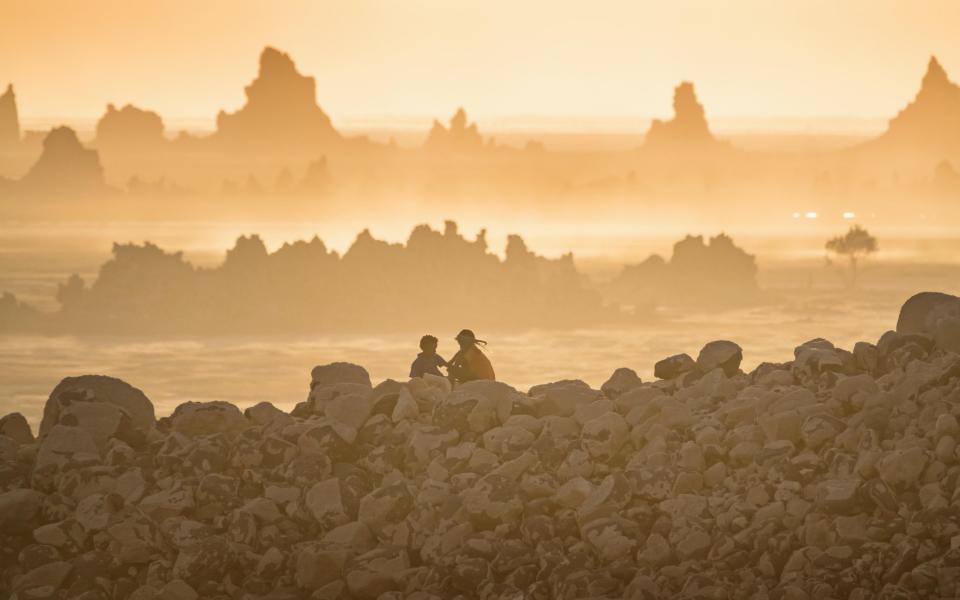
A strong contender for “country most likely to be pinned incorrectly on a map”, the entirety of this tiny East African nation is an enigma. Sandwiched between Eritrea, Ethiopia, disputed Somaliland and Houthi hotspot the Gulf of Aden, Djibouti is not in the most inviting neighbourhood. Unsurprisingly, mass tourism has never taken off. But there’s at least one place that deserves positive attention.
I’d crossed the border from Ethiopia by road to reach Lake Abbe, a salt-encrusted basin in the Afar Depression. After passing through nomadic desert settlements, we arrived at sunset. I watched coils of smoke spiral from limestone chimneys, blurring flocks of retiring flamingos into smudgy silhouettes. In the distance, a young boy herded goats and donkeys. Teetering between Biblical and apocalyptic, it was a scene borrowed from another time.
Steppes Travel (01285 880 980; steppestravel.com) offers a six-day Salt Lakes and Whale Sharks holiday. From £3,165 a head, excluding flights.
12. The Saloum Delta, Senegal
‘Something about the place gets into your soul’
By Gavin Haines
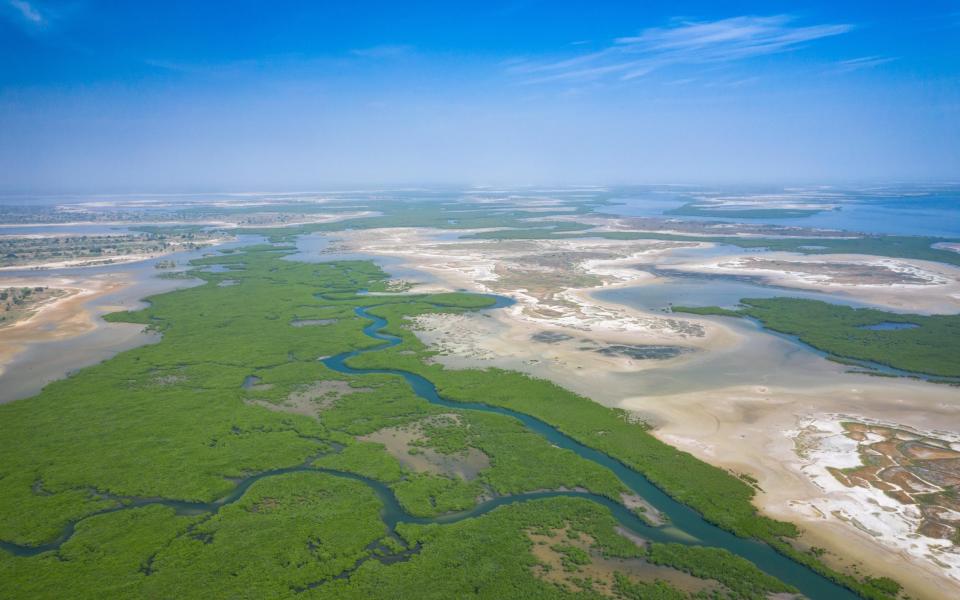
We sped towards the Saloum Delta, seven strangers wedged in a death-trap taxi that creaked and groaned as our driver swerved from oncoming lorries. Senegalese cabbies attach goats’ tails to their cars for luck. It means they don’t have to drive sensibly.
It was a relief, then, to finally see the mangrove-lined shores of the shimmering delta, all silver in the afternoon sun. This is where the Sine and Saloum rivers pour serenely into the Atlantic amid the chatter of exotic birds. Something about the place gets into your soul. I explored the verdant backwaters by kayak, watching fish leap out of the brine, goading the goliath herons, pelicans and nearby fishermen, who were casting out nets from colourful boats.
The 180,000-hectare Saloum Delta is on many a twitcher’s bucket list. But it’s not all about the wildlife. Amid the mangroves and backchannels are islands, some made of shells. Fadiouth, just north of the delta, is perhaps the most fascinating. There, seafood-quaffing locals have reclaimed the sea with spent clam shells. Houses, pathways and even graveyards are made from old shells, which crunch underfoot wherever you walk. And walk you must: there are, mercifully, no cars on Fadiouth. No call for goats’ tails and old lady luck here.
The Gambia Experience (gambia.co.uk) offers a seven-night “luxury wrapped in canvas” stay at the Saloum Delta from £1,249 pp, including flights.
13. Odontotos Rack Railway, Greece
‘It packs a lot of thrills into a 60-minute ride’
By Heidi Fuller-Love
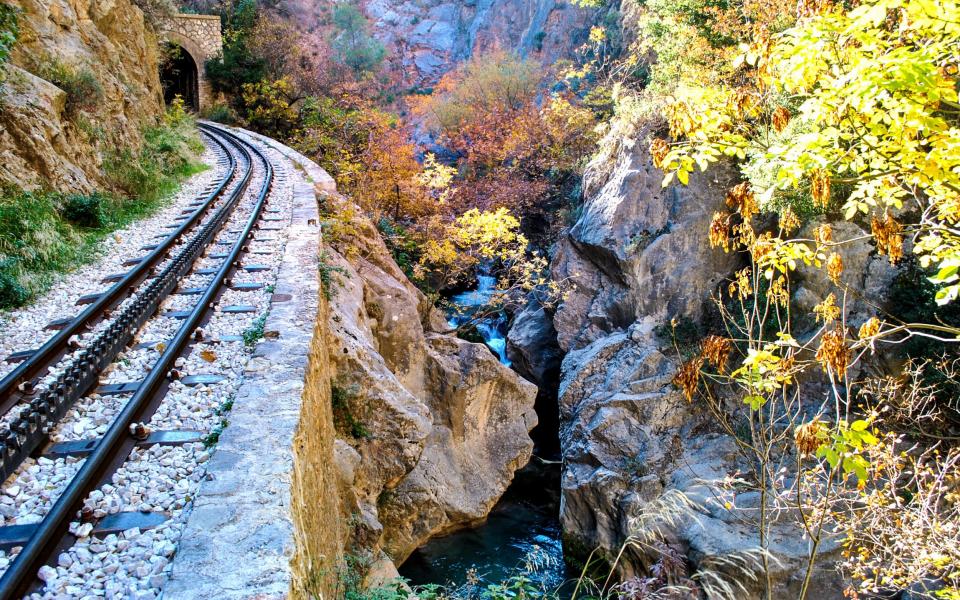
With the whirr of an antique carriage clock, Greece’s unique Odontotos Rack Railway carried me away from the northern Peloponnese beach resort of Diakopto towards the high-flung hamlet of Kalavryta on the slopes of Mount Helmos, smeared even now in early June with snow.
Developed to climb the steepest slopes, there are only 50 of these cog railways in the world today – most of them are in Italy and Switzerland. Greece has only this one.
Blasted from the mountain’s flanks between 1889 and 1895 by Italian labourers, it climbs to a height of 700m over a distance of 14 miles and packs a lot of thrills into a 60-minute ride. Jiggering along a 76cm track the dinky electric-powered train dives into tunnels barely bigger than hobbit holes, clatters across car-wide bridges and stutters alongside V-shaped gorges filled with frothing snowmelt. Best of all is the grand finale: clattering through Portes, a pair of rusted Lord of the Rings-like iron gates framing a low dark tunnel that’s as terrifying as the entry to Moria.
Fly from Heathrow to Athens with Aegean Airlines from £108 (aegeanair.com) and take the train to Diakopto with Trainose (trainose.gr; from £20), where the Odontotos departs for Kalavryta (odontotos.com; from £16 return).
14. The temple of Ranakpur, India
‘A wondrous labyrinth of marching elephants, dancing goddesses and slithering serpents’
By Oliver Smith
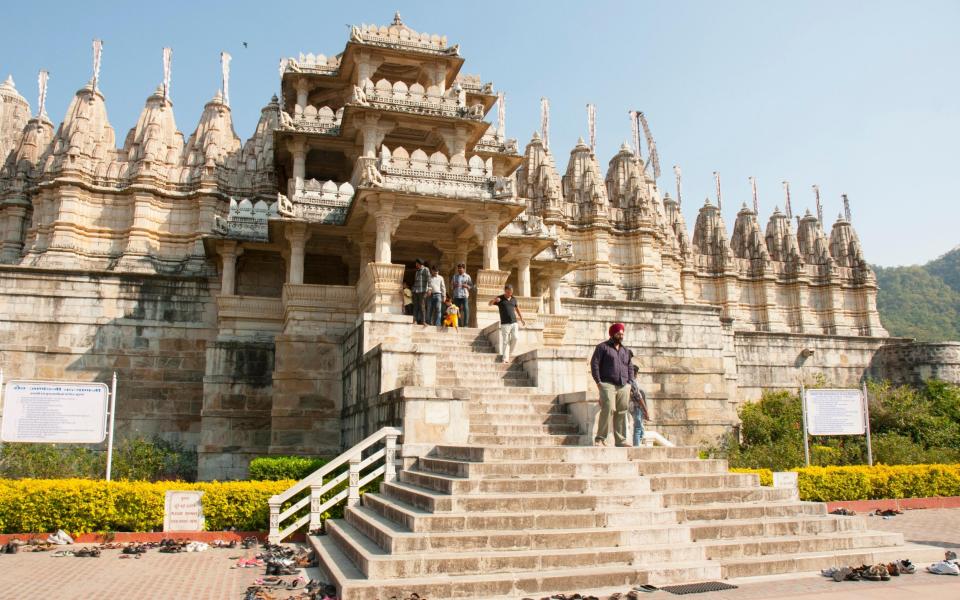
In a world where people spend half their lives staring down at their phone, it pays to look up. Not least inside the enthralling Jain temple at Ranakpur, which possesses one of the most spectacular ceilings on Earth: intricately carved, blindingly white and utterly dazzling.
The fine craftsmanship doesn’t stop there. Tucked away in the lesser-visited Aravalli hills between Jodhpur and Udaipur, the marble temple covers 48,000 square feet, has 29 separate halls, 80 domes, 426 columns and 1,444 pillars – all wrought in exquisite detail. It adds up to a wondrous labyrinth of marching elephants, dancing goddesses and slithering serpents. No two pillars are the same, and according to legend it is impossible to count them all (so maybe don’t trust that figure of 1,444). To witness the sheer scale of the temple, and ponder the amount of work that went into creating it, is genuinely breathtaking.
Spend a few days in the surrounding Aravalli hills, staying at the wonderful Rawla Narlai, a 17th-century retreat with magical gardens and a swimming pool. It’s the perfect place to unwind after a tour of Rajasthan’s cities.
15. Toprak-Kala, Uzbekistan
‘This silent and spectacular ruin seemed to epitomise the romance and allure of the Silk Road’
By Sophie Butler
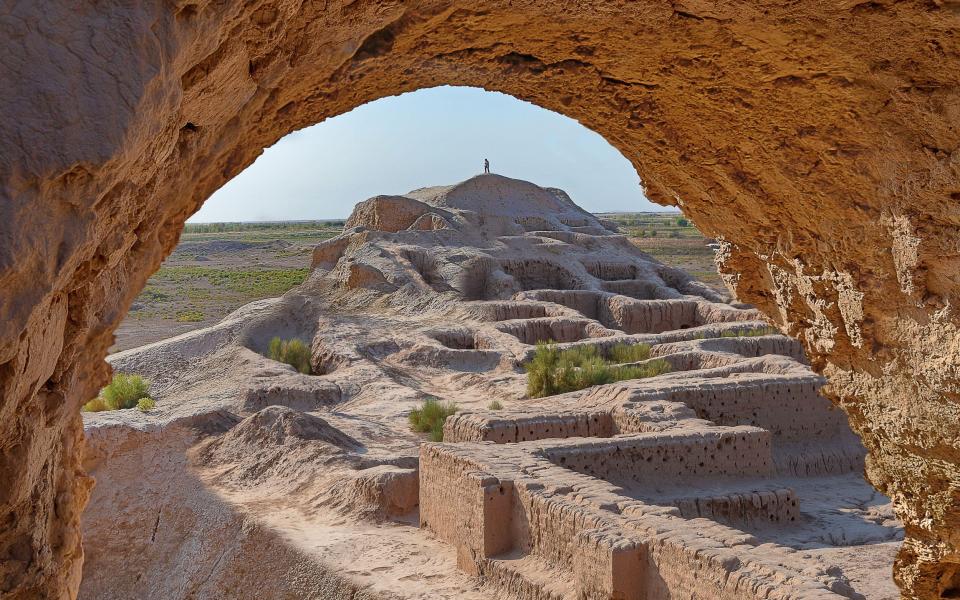
Late afternoon, and an excursion to the remote site of Toprak-Kala, 50 miles from Urgench before catching a flight to Tashkent and onwards to the UK. On paper the visit seemed little more than a postscript to the intoxicating tour of the Silk Road cities, Samarkand, Bukhara and Khiva, with their exotic mix of souks, mosques, madrassas and minarets.
But the excavated remains of this desert palace-fortress and town, the capital of Chorasmia in the 2nd and 3rd centuries AD, came as a revelation. In the warm rays of the sinking sun, its sandy escarpments and high, defensive walls glowed gold, and the stunted remains of its tall towers and mysterious arches cast long shadows across the flat, desert landscape.
This silent and spectacular ruin, once a cultural epicentre and a haven for the strings of camel trains traversing east to west, seemed to epitomise the romance and allure of the Silk Road like nothing else.
Martin Randall Travel (020 8742 3355; martinrandall.com) offers a 12-night Samarkand and Silk Route Cities tour, including a visit to Toprak-Kala, from £5,160 with flights.
16. The Teifi Pools, Ceredigion
‘So remote you might be on the moon, and so deep they were once considered unfathomable’
By Hattie Garlick
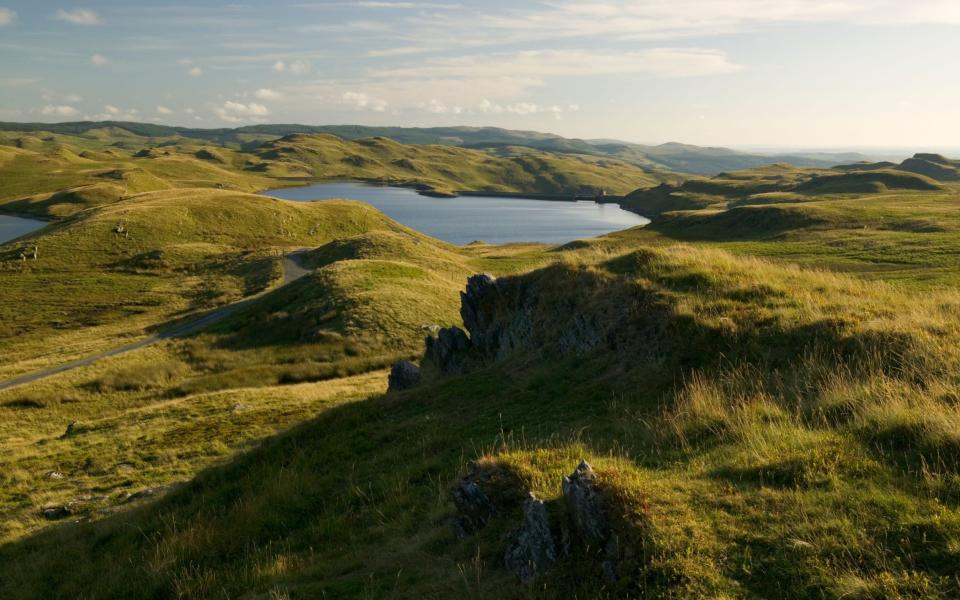
Ever wanted to be the person in those car adverts? The one driving as the camera pans out to reveal a jaw-dropping hill-scape – operatic sky stretching across windswept moors, and reflected in moody expanses of water. No other soul for miles in any direction (unless you count the odd sheep).
Of course you have. And you can, just follow the single-track road from the small village of Pontrhydfendigaid, skirting the ghostly ruins of Strata Florida, (a 12th-century Cistercian Abbey, possibly once home to the Holy Grail), and up to the Teifi Pools. These glacial lakes and reservoirs are 1,500ft above sea level: so remote you might be on the moon, and so deep they were once considered unfathomable. Hike the Teifi Pools Walk (a six-mile loop), fish for wild brown trout or just gaze – awestruck – at the raw majesty of this otherworldly place.
Stay at Nanteos, a handsome Georgian, country house hotel just a 20-minute drive from the pools (nanteos.com; doubles from £120 a night).


